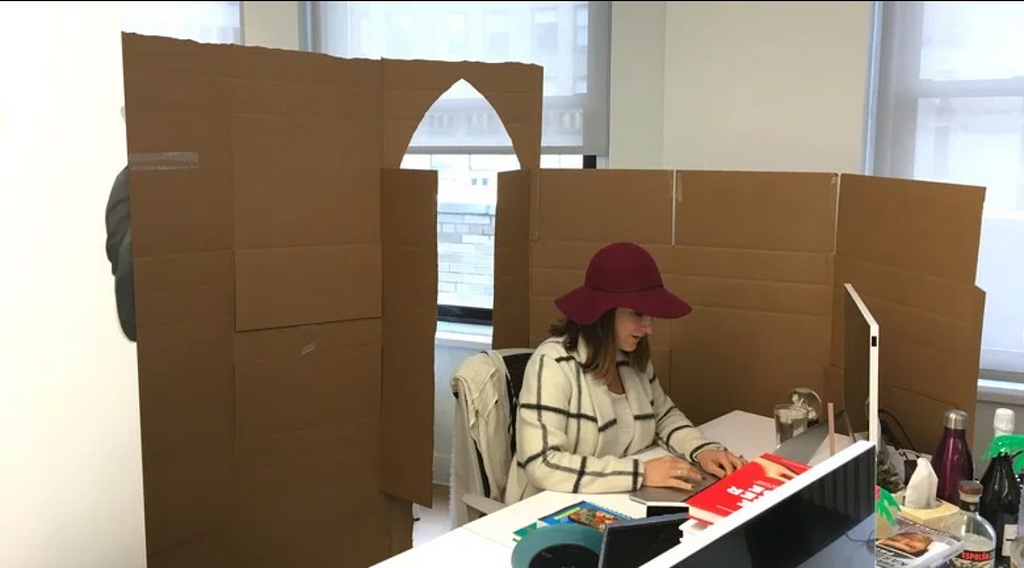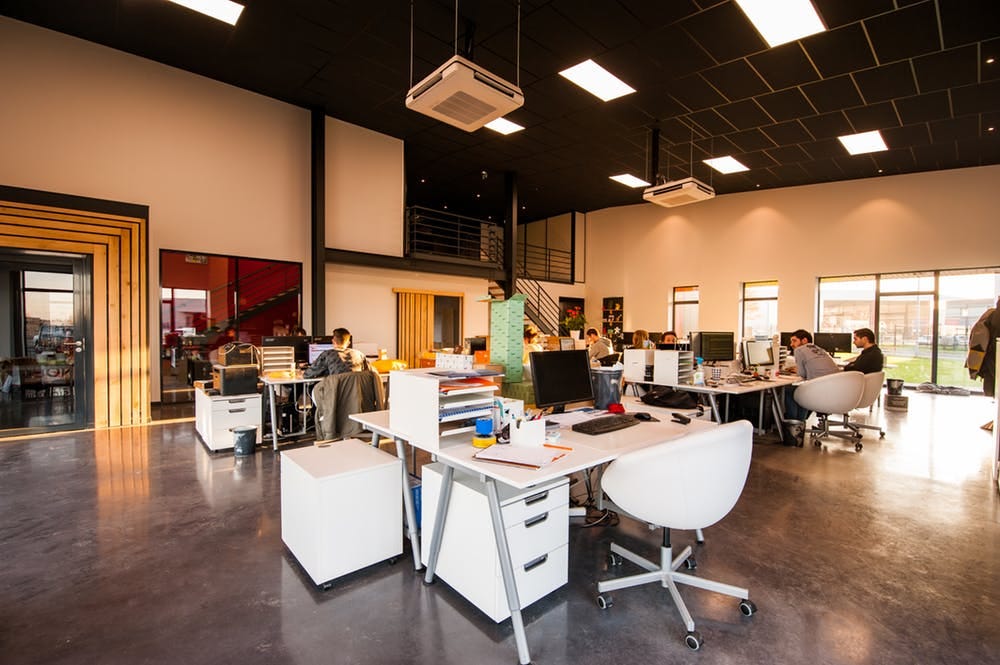Latest news about Bitcoin and all cryptocurrencies. Your daily crypto news habit.

We’ve all been part of this debate about whether we should have an open-plan office or not. In general, executives would advocate for the open-plan office, while the individual contributors would say, “Please, no!!!” ;). Executives won’t listen because they feel they are the only ones who can see the full picture clearly enough to make this decision…of course! And apparently, 70% of all offices now have an open floor plan…
So I was wondering if maybe we could make a very rational analysis of this matter with a hard-to-argue-with methodology (though I sometimes express my opinion). Then, perhaps, we can agree on what’s the best for the company (you will never convince an executive what’s the best for your developers, unfortunately). And finally, we could discuss what could be done if you’re stuck with an open office.
Here is the approach. Let’s talk the criteria to consider. Please add any you feel are missing in the comments. And then we’ll go over the alternatives and rate them on those criteria.
What are the criteria on the organization of your offices?
If there was one criterion that would speak to any executive, it should be the Return On Investment (ROI), but how can we break it down to make it understandable?
- Financial criteria: The office is a cost. The more floor space you need, the more costly it is.
- Productivity criteria: What’s the point of reducing the floor space if your team’s productivity output plummets? Productivity is the output of the organization, but also indirectly of the office.
- Collaboration criteria: The best ideas and best innovation come from the collaboration of several minds. If the team creates plenty of products, but none are the right product, the ROI of the team is 0. So collaboration is directly correlated with the quality of the output.
- Talent retention criteria: Let’s be honest here. Salaries are a lot more costly than a floor plan! If the floor plan impacts talent retention, this needs to be a criterion you pay attention to.
At first glance, these seem to be 4 great candidate criteria.
But from the executive’s perspective, there may be a 5th important one: having the feeling of having the whole team in one place, easy to reach and easy to monitor. We might consider this criterion not valid, but I’m ready to bet this is clearly a decision factor. Just for the sake of the argument, let’s consider this as a 5th criterion (specific to management): accessibility.
Now let’s check out the alternatives.
Actually, let’s throw out the financial and talent retention criteria
Why? Because they don’t really matter. Let me explain.
On the financial side, let’s assume that individual desks would take 5 times more space than an open-plan office for the same number of developers. For a team of 100 developers, it should cost you about $70k per year for the rent for an open-plan office. Sure, this depends on which city, but you’ll see it won’t matter. The average wage for developers should be about $100k, and that is conservative. All those salaries cost $10M per year! So 10% productivity loss stands for $1M of money thrown at the wall (no pun intended 😉). 15 times more than the office rent!
On the talent retention side, your team’s perceived productivity and efficient collaboration are directly correlated to your talent retention. If your team is productive and collaborate together well, talent retention will be a lesser problem, all other things equal.
That’s why productivity and collaboration should be your only criteria, whether you are an individual contributor, manager or executive. Let’s analyze the different alternatives on those 2 points.
What are the alternatives?
Productivity: There is a reason why developers hate open-plan offices. Yes, hate might be a good word to use; just go on reddit to check for yourself: “The open-plan office is a terrible, horrible, no good, very bad idea.” Why? Developers are more exposed to interruptions and stress. If the workspace is designed to have as much motion as possible, that won’t help them focus! Any interruption can easily take more than 30 minutes from the developers’ productive time. And the more interruptions, the more frustration, the less quality work, the more bugs — and it goes on. Check out this article if you want to see the sources of productivity loss! Let’s assume you had 2 extra interruptions every day because of this. That’s 1 hour every day: 15% productivity loss!
Collaboration: There is a Harvard study on this; it actually says open-plan floor offices make your team less collaborative. This may come as a surprise to executives. But I assure you, not to developers! The study says that, for open-plan offices, “face-to-face time decreased by around 70 percent across the participating employees, on average, with email use increasing by between 22 percent and 50 percent (depending on the estimation method used).” And when you think about it, it’s obvious. People can’t cope with the noise, and therefore put headphones on.
Accessibility: (for executives) This is the best configuration for executives to feel part of the team, having them all packed in the same place. Mobility between teams is made easier too.
Sure, there are many ways to design an open-plan office to offset some negative points. We’ll look at that while we check the alternatives.
2. The cubicle farm
The main problem with cubicles is how they are perceived because of the way they used to look. But you can make them fun! Just look at the picture below for Zappos’ cubicles!
Productivity: In cubicles, you have fewer distractions and unnecessary interruptions, thanks to the little extra privacy you get. Not seeing your colleague’s face might just be enough for you to not stop by and crack a joke to him or her. Plus, developers feel less “watched” and can be more relaxed, allowing them to focus more. But you do have the same amount of noise, though, which can be easily offset by putting headphones on.
Collaboration: Cubicles could be arranged by teams to achieve maximum collaboration. But this might mean you would need to change cubicles if you change teams/squads, so developers might be less inclined to personalize their cubicles as they would ideally want to. Even though you will need to get up to talk to your colleague across from you, you have a bit more privacy to have deeper conversations with colleagues with less fear of disturbing their neighbors, which is a good point for collaboration
Another point worth mentioning is that, even if we don’t care about the financial part, having a floor with 100 developers including 10 teams fosters more collaboration than having 5 floors of 20 developers (2 teams per floor).
Accessibility: (for executives) Cubicles take twice more space than desks poised one next to the other. So executives might feel their teams are less accessible, even more so if they need several floors instead of just one, because of the place cubicles take.
3. Team separation (open within team, closed to other teams)
If you have very large teams, it will just be like the open-plan office. So in this alternative, I’m considering teams of less than 10 people.
Productivity: The smaller the team, the better the environment for focusing. Whether you have your manager within this space can actually make a huge difference, though, as developers might feel a bit less relaxed, depending on the style of management, of course. The big advantage here is the lack of distraction aside from the team. You still might be distracted by your teammates, but developers know what interruptions do. So they wouldn’t draw your attention for a mere distraction, if they feel you’re in the zone.
Collaboration: This might be the best configuration for collaboration within the teams. However, this might lower collaboration among separate teams. A way to offset this is to put teams that should collaborate together in adjacent spaces and have common corridors or meeting spaces.
Accessibility: (for executives) That’s perfect for managers. They have their space with their team, not disturbed by other teams. However, executives might not feel the same. Instead of having one meta-team, they have several separate teams in possibly different places.
Between 3 and 8 people feels like a good compromise, but that’s my opinion; feel free to disagree. More and you get more distractions.
4. Individual offices
Productivity: This is the option with the least interruptions, and therefore theoretically with the highest productivity. However, having a colleague being focused on their work in the same room as you can help you get focused more easily. Plus, a developer can’t be productive for 8 hours straight, and needs some time to have some light conversations to go back again in the zone. This can’t be easily done in individual offices. You need to be 2 in there at least for that.
Collaboration: Offices make it easier to have conversations. You close the door and you can talk about what needs to be talked about, without worrying about bothering other people. That applies when discussing complex problems, but not for easy questions that will probably be discussed online. This is true especially in the case the person you want to talk to is not nearby, as the team will be spread at this point.
Accessibility: (for executives) Individual offices can take 5 times more space than an open-plan floor with team separations. Your team of 100 developers could be spread across many floors. Accessibility is at its worst for executives, if your company has an office.
Well, we also needed to talk about this one!
Productivity: The least interruptions and the highest productivity. However, not everybody is built to work remotely. Some teams do virtual coffee breaks for those little breaks between 2 tasks. All communication is asynchronous, so developers can respond when they feel like to.
Collaboration: That’s a topic to itself. More and more companies adopt the remote office, and more and more remote collaboration best practices emerge. Collaboration is just not the same as in a physical office, and your company needs to seriously adapt on this point. But collaboration can even be higher in remote offices, as people fear less participating to discussions virtually.
Accessibility: (for executives) That’s the worst for executives.
So which one is the best?
I think that unfortunately accessibility is the criterion the most considered by executives today, even though it shouldn’t be if you think about the companies’ best interests. But the companies are not the decision makers, their executives are.
If we don’t consider accessibility, it depends on whether you favor productivity over collaboration. If you favor collaboration, individual offices are typically the worst for this. If you favor productivity and output, I would put 2–3 developers in individual workspaces, so that you can have calm and focus for their individual productivity, along with a bit more developers on the same floor.
My personal favorite is remote teams. But if you have an office, it would be team separation, as it fosters the most collaboration and productivity within the team. I also personally like small teams/squads, 3 to 5 people all working on one project. But that’s a different topic!
What to do if you have an open-plan office…
…and you want to make it right to your developers. Here is what you can do:
- Add mobile separators between teams, or at least distance — enough to offset the motion disturbance
- Offer noise-cancelling headphones (preferably the ones of their choice in your welcoming package) => even if that’s not the best for collaboration, you can’t prevent developers to not access their minds!
- Offer privacy screen filters so they feel a bit of privacy, instead of the constant stare of their manager on their screen 😛
- If you can afford cubicles, have the discussion with your teams. How much productivity can be gained? I feel they will be interested
In any case, if someone tells you that “open offices often foster a symbolic sense of organizational mission, making employees feel like part of a more laid-back, innovative enterprise,” you know what to tell them!
Let me know your thoughts. Are there any considerations I missed?
Before You Go…
Learned something? Don’t hesitate to share it to help others find it!
If you are interested in articles about engineering and product leadership, productivity and how to scale a team, subscribe to our newsletter!
Or join our Engineering Leadership Community.
Engineering Leadership Community | Anaxi
You can also check out my latest articles:
- Top 12 Things That Destroy Developer Productivity
- The Attributes of a Unicorn 20x Engineer
- How to Make Estimates Finally Useful to Developers
You can also follow me on Twitter to stay connected. Thank you!
This article has been originally published here on SD Times.
Open offices are in the best interest of executives, not companies was originally published in Hacker Noon on Medium, where people are continuing the conversation by highlighting and responding to this story.
Disclaimer
The views and opinions expressed in this article are solely those of the authors and do not reflect the views of Bitcoin Insider. Every investment and trading move involves risk - this is especially true for cryptocurrencies given their volatility. We strongly advise our readers to conduct their own research when making a decision.



